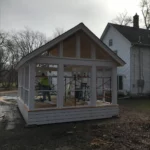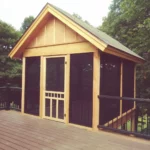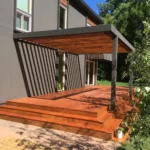Outdoor living spaces have become increasingly favored as slots to enjoy the outdoors and extend our living areas in home design. When creating these outdoor havens, homeowners often choose patios and porches. Even though they may appear similar at first glance, a distinct difference between patio and porch can influence your decision.
A patio is a paved outdoor site typically built directly on the ground level, providing an open-air space. In contrast, a porch is generally attached to the front or back of a house with columns or pillars supporting its roof. Porches often provide additional protection from the elements compared to patios since they are covered.
This article will dig deeper into what sets these two structures apart to help you decide whether to build a porch or a patio. Exploring the features, purposes, and situations where having both could prove beneficial will help you choose between these options.
What Is a Porch?
A porch is an outdoor structure attached to a house near the front or back door. It’s part of the home’s design and matches the interior style with architectural elements like wood floors. Porches have roofs but no solid walls. This structure allows for open-air enjoyment while offering some weather protection.
Depending on their location, porches can be categorized into different types. A front porch attaches to the front of a house and typically encloses the main entrance. This enclosure creates an inviting space for guests.
On the other hand, a back porch is located at the rear of the house. It provides access to outdoor areas such as gardens or backyard spaces.
Design features also define various types of porches. For example, screened porches are covered living areas with screen panels to allow fresh air while keeping bugs out. They are perfect for year-round use in all seasons! Lanais are popular in Hawaii and tropical regions. These large enclosed porches offer shade but maintain an open feel on one side.
Another type worth mentioning is porticoes. They feature roofs supported by columns around entryways without enclosing them completely.
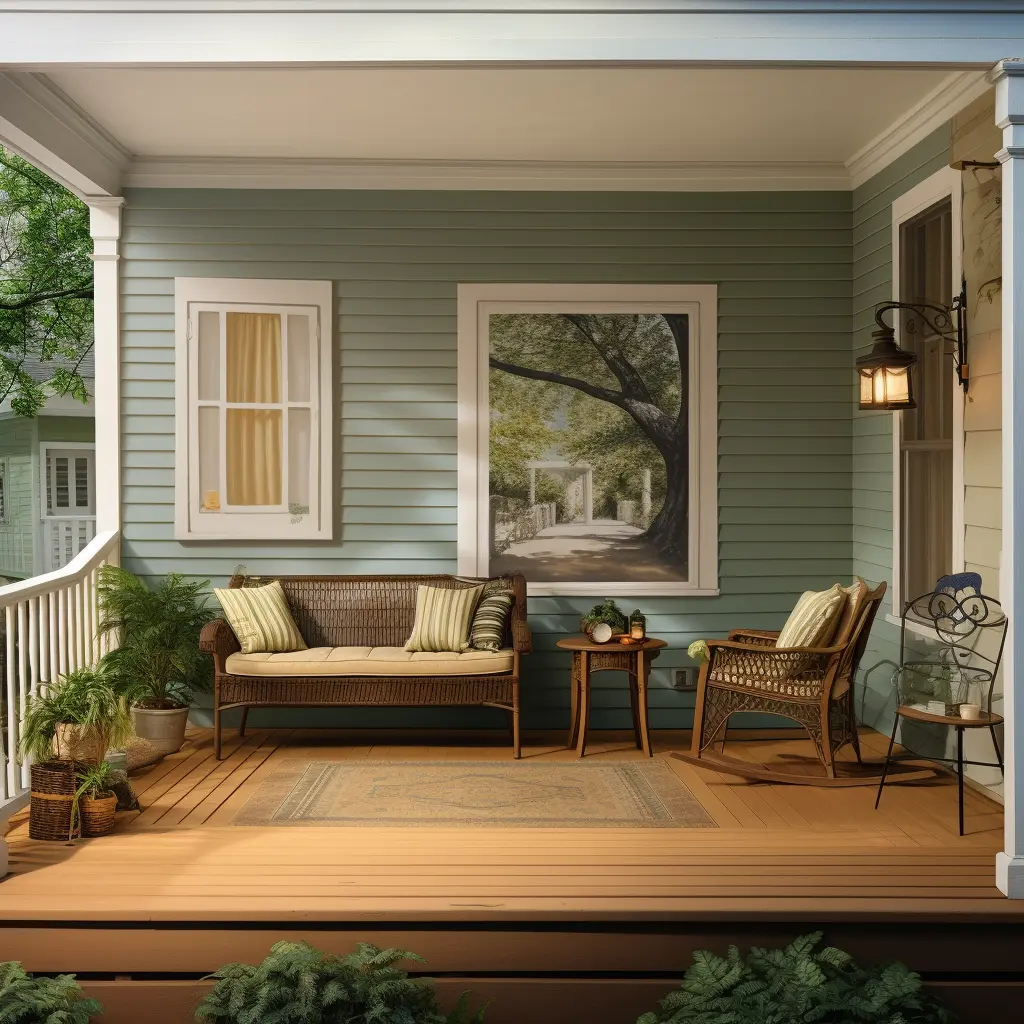

What Is a Patio?
A patio is an outdoor area made from stones like
- Pea gravel
- Concrete pavers or
- A poured concrete slab
It provides an area for outdoor activities such as dining and relaxing. Patios are typically uncovered, so they need to be able to withstand different types of weather. Unlike courtyards with enclosing walls, patios do not usually have any covering overhead.
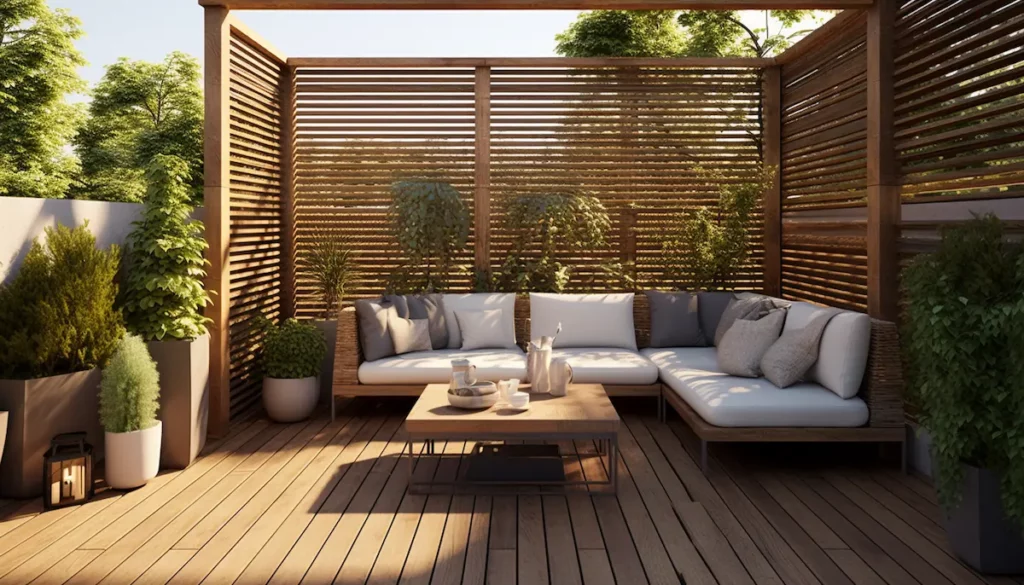

Key Difference Between Patio and Porch
A patio and a porch are distinct housing attachments, each with unique characteristics. Understanding the critical dissimilarities between the two can help you decide on your outdoor area. Let’s check them out.
-
Structure and Location
A porch is typically attached to the home and has a ceiling. In contrast, a patio is an outdoor space, typically located at ground level. Porches are often used as places to sit or enjoy the weather. On the other hand, patios are great for dining and relaxing. The location of each structure can vary depending on the design of your home.
-
Roofing and Cover
There are a few critical differences regarding roofing and covers for porches and patios. Porches typically have a roof connected to the home, providing coverage from rain or sun.
Conversely, patios usually do not have a roof but can benefit from optional coverings like pergolas or umbrellas. Considering your needs and preferences is essential when deciding which option is best for you.
-
Design and Architecture
A porch is a covered structure attached to the front or back of a house, providing a sheltered outdoor area. It usually has a ceiling and may have railings or screens. Conversely, a patio is an open-air area typically built at the bottom level using materials like pavers or concrete slabs.
The design and architecture of porches focus more on integrating with the home’s overall aesthetic and layout. At the same time, patios offer more flexibility in size and placement within the outdoor area.
-
Function and Use
A porch is generally linked to the home and has a roof, making it an excellent space for an outdoor breather. On the other hand, a patio is an open-air area, usually at the bottom level. It provides a versatile space for entertaining guests.
Both options have their unique functions and are used to enhance your outbound living experience.
-
Accessibility
Porch and patio accessibility differ based on their design. Porches are typically raised structures with steps or ramps for entry. Conversely, patios are at ground level without barriers.
Both offer outdoor living space options. However, porches may be easier to access for individuals with mobility issues due to the availability of ramps or elevators. When considering an outdoor space, consider your specific accessibility needs and choose accordingly.
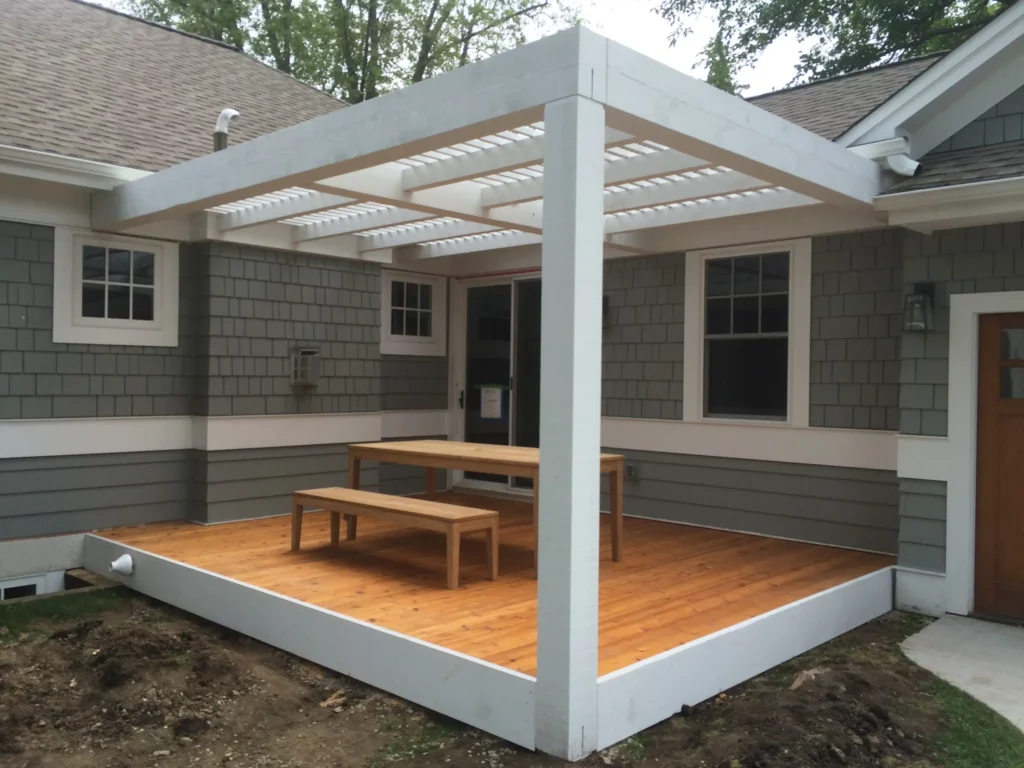

Factors to Consider When Choosing Between a Porch and a Patio
Looking to choose between a patio and a porch? Let’s explore some key factors to consider.
-
Location and Climate
Location and climate are important considerations when choosing between a patio and a porch. Being open outdoor areas, Patios may not be suitable for use during winter months in colder climates.
However, porches can be enjoyed year-round with screens or windows to keep out the elements. Your area’s weather conditions should be considered when deciding which option is best for you.
-
Privacy
When deciding between a patio and a porch, privacy is a vital factor to consider. A screened-in porch offers more seclusion compared to an open-air patio.
You can relish the outdoors without worrying about prying eyes or unwanted guests. Add plants or install blinds for added privacy on your patio or porch. Consider your individual preferences and desired level of privacy when making your decision.
-
Entertaining
When it comes to entertaining guests, the location of your outdoor area can make a difference. Typically found at the front of the house, porches provide little privacy and are better suited for small social gatherings.
On the other hand, patios located in the back offer more seclusion and are perfect for hosting larger parties or events. Consider how you enjoy entertaining when deciding between a patio and a porch.
-
Space
Considering your space is crucial when picking between a porch and a patio. A small backyard with a patio might feel cramped, overwhelming other landscape features.
Similarly, having a porch in a tiny front yard may expose you to the neighborhood. Finding balance and utilizing your space effectively is vital for comfortable outbound living.
-
Permit and Zoning
Permits and zoning regulations are critical when selecting a patio and a porch. Before building, check local codes for any restrictions on size, height, or setback requirements. Obtain the necessary credentials to ensure compliance with the law. Compliance will prevent legal issues down the road.
Does It Make Sense to Have Both?
A front porch and a backyard patio can offer numerous benefits, making it worthwhile to utilize both spaces when possible. These two outdoor areas increase your available living area and enhance your home’s value.
A front-end porch provides several advantages, such as boosting curb appeal and storing items that can track in debris. Additionally, it offers an opportunity to interact with neighbors and socialize within the community.
On the other hand, a backyard patio is perfect for hosting larger gatherings due to its ample space. It also provides a greater sense of privacy. Moreover, it allows you to control how much sun exposure you desire.
Combining both structures into your outbound living plan creates versatile options catering to different preferences and occasions. Whether it’s morning coffee on the front porch or summer barbecues on the patio, each area serves another purpose. Plus, they significantly increase the enjoyment of your outdoor space.
How to Maintain Your Porch or Patio
To maintain your porch or patio, regular cleaning is vital. One of the best ways to do this is by pressure washing once or twice a year. This washing will remove any dirt and grime that has accumulated over time.
If you have a screened-in patio, paying extra attention during the spring when pollen levels are high is essential. Before pressure washing, wipe down your outdoor furniture and screens with a rag and cleaner to remove any pollen buildup. Remember that even though your porch may be covered, rain doesn’t wash off the pollen effectively. So proactive cleaning becomes essential.
Inspecting for any damage or wear should also be part of routine maintenance. It’s applicable whether it’s loose boards on your deck or rusted screws on your railing. Regularly sweeping away debris such as leaves can also help avert mold and mildew growth on surfaces like pavers or wooden decking.
Lastly, preventative measures like applying sealant annually can extend the life of wood decks and concrete patios. Besides, these measures will protect them from harsh weather conditions.
Conclusion
In conclusion, understanding the difference between a porch and a patio is key when considering outdoor living spaces. A patio is typically an open-air paved area that can be attached to or freestanding from the home. Conversely, a porch is usually covered and adjoins the house.
Both options offer unique benefits for enjoying the outdoors, whether dining on a patio or relaxing on a front-end porch. It’s essential to consider personal preferences and needs when deciding between them.
For expert guidance in building or repairing these outdoor areas in Lake Minnetonka, Brewer Built LLC has years of experience to help. Contact us today for your preferred build.

